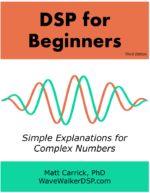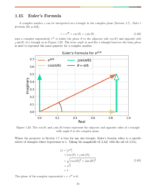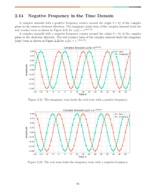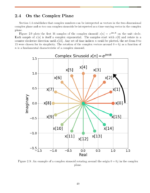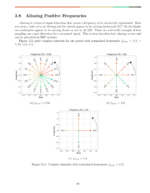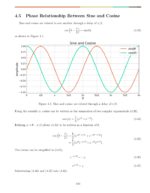Table of Contents
Introduction
The convolution property of the Fourier transform states that the convolution of x(t) and h(t) is the product of the frequency-responses X(f) and H(f),
(1) ![]()
More posts on DSP Math:
Proof
The end result needs to be two Fourier transform integrals of x(t) and h(t) in order to arrive at (1). Start by writing the convolution using the integral
(2) ![]()
Take the Fourier transform of (2)
(3) ![]()
Expand the Fourier transform of (3) by writing out the integral,
(4) ![]()
There are now two integrals over time, both t and ![]() which will form the basis for the two Fourier transforms. The variables dependent on t and
which will form the basis for the two Fourier transforms. The variables dependent on t and ![]() need to be rearranged so their integrals are independent of one another. Start by separating the terms only dependent on
need to be rearranged so their integrals are independent of one another. Start by separating the terms only dependent on ![]() by rearranging the terms in the right hand of (4),
by rearranging the terms in the right hand of (4),
(5) ![]()
The variable ![]() is a problem because it has dependencies on both t and
is a problem because it has dependencies on both t and ![]() . Use a variable substitution
. Use a variable substitution
(6) ![]()
such that
(7) ![]()
As a result of (6),
(8) ![]()
and
(9) ![]()
The derivative ![]() because it is a constant within the integral over t in (5). Substituting (8) and (9) into (5),
because it is a constant within the integral over t in (5). Substituting (8) and (9) into (5),
(10) ![]()
The exponential can be expanded as the product of two exponentials of ![]() and v,
and v,
(11) ![]()
(12) ![]()
Rearranging (12) into integrals of v and ![]() ,
,
(13) ![]()
The two integrals are now Fourier transforms of x(t) and h(t),
(14) ![]()
(15) ![]()
Therefore ![]() as in (1).
as in (1).
Conclusion
Check out these DSP math posts:


![Figure 1: The two sequences for the autocorrelation of x0[n] and x0[n].](https://www.wavewalkerdsp.com/wp-content/uploads/wordpress-popular-posts/5515-featured-125x100.png)
